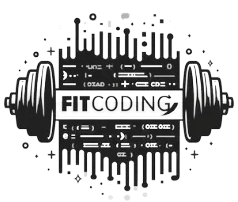AI continues to reshape how businesses and individuals communicate. By 2025, AI calling features promise to deliver unprecedented efficiency, personalization, and accessibility.
These advancements stem from rapid developments in natural language processing, machine learning, and voice recognition technology. Companies leveraging these tools will gain a competitive edge while everyday users will experience seamless, intuitive interactions.
So, let’s start exploring the upcoming AI calling features!
1. Real-Time Voice Translation for Global Calls
Imagine a small business owner in Texas calling a supplier in Japan. Language barriers once made this a logistical nightmare, requiring translators or halting progress altogether.
In 2025, real-time voice translation will eliminate that hurdle. This AI-powered feature instantly converts spoken words into another language during a call, maintaining the natural flow of conversation.
How It Works
Advanced neural networks analyze speech patterns, tone, and context. The system listens to the speaker, processes the audio, and delivers a translated version to the recipient in their native language.
Unlike older translation tools that stumbled over idioms or slang, 2025’s AI understands nuance. It adapts to accents and preserves emotional undertones, like excitement or urgency.
Why It’s Mind-Blowing
Businesses expand globally without hiring multilingual staff, and travelers troubleshoot issues abroad without language apps. The technology bridges cultural gaps, making international collaboration effortless.
Data from industry reports suggests that over 60% of companies plan to adopt this feature by mid-2025, driven by its potential to boost productivity in cross-border operations.
What to Expect
Look for integration with platforms like Bigly Sales, where sales teams can pitch to clients worldwide without language training. Call quality remains crisp, with latency under half a second.
2. Emotion-Aware Call Assistance
Picture a customer service rep dealing with an irate caller. The conversation escalates, and the rep struggles to de-escalate.
Imagine an AI stepping in, detecting frustration in the caller’s voice, and suggesting calming phrases in real time. Emotion-aware call assistance arrives in 2025 to make this a reality.
How It Works
AI uses voice sentiment analysis to gauge emotions and examines pitch, speed, and word choice. Within seconds, it identifies anger, joy, or confusion. The system then feeds actionable insights to the human agent via a screen prompt or earpiece.
The AI adjusts its tone and script dynamically for fully automated calls, soothing an upset caller or matching enthusiasm with a happy one.
Why It’s Mind-Blowing
Customer satisfaction skyrockets when emotions guide responses. Studies show that 70% of consumers prefer brands that understand their feelings.
It empowers agents to build rapport faster, turning tense moments into positive outcomes. It also reduces burnout by taking the guesswork out of emotional labor.
What to Expect
Businesses adopting this technology will see higher retention rates. Training costs drop as AI handles complex interactions.
3. Predictive Call Routing
Have you ever waited on hold only to be transferred to the wrong department? It’s frustrating, right?
Predictive call routing will use AI to fix that problem in 2025. It will ensure callers reach the right person on the first try, every time.
How It Works
AI analyzes historical call data, customer profiles, and real-time inputs, such as the caller’s opening words. It predicts the purpose of the call and routes it to the best-suited agent.
Machine learning refines these predictions over time, adapting to patterns unique to each business.
Why It’s Mind-Blowing
Wait times shrink, and resolution rates climb. A recent survey found that 85% of callers hang up after two minutes on hold.
Predictive routing cuts that risk, boosting efficiency. For sales teams, it means connecting prospects to closers faster, increasing conversion rates.
What to Expect
AI tools will integrate this feature to streamline lead management. Small businesses will benefit as much as large enterprises, leveling the playing field.
4. AI-Driven Voice Cloning for Personalized Outreach
Think about a salesperson recording one voicemail and letting AI tweak it for hundreds of prospects. Soon, AI-driven voice cloning will make this possible. It replicates a human voice with stunning accuracy, customizing messages at scale.
How It Works
The process starts with a short voice sample—about 10 minutes of speech. AI maps the speaker’s tone, cadence, and quirks, then generates new audio based on text inputs.
It can adjust accents, languages, and emotions, creating tailored messages without extra recording sessions.
Why It’s Mind-Blowing
Marketing campaigns become hyper-personalized without draining resources. A single rep can “speak” to thousands, and each message feels authentic.
Research indicates that personalized outreach lifts response rates by 30%. This feature blends efficiency with human touch, making it a game-changer for sales and support.
What to Expect
AI tools will harness voice cloning for automated follow-ups. Ethical use remains key, and transparency about AI-generated voices avoids trust issues.
5. Autonomous Call Agents with Multimodal Capabilities
Consider a busy entrepreneur who misses a supplier call. Instead of rescheduling, an AI agent handles it, negotiating terms via voice and then texting a summary.
Autonomous call agents with multimodal capabilities debut in 2025, blending voice, text, and data analysis into one powerhouse tool.
How It Works
These agents operate independently and are powered by advanced language models and multimodal AI. They process spoken requests, access databases, and respond via voice or text.
If a caller asks about stock levels, the AI checks inventory in real time, answers verbally, and follows up with a written confirmation.
Why It’s Mind-Blowing
Human oversight shrinks as AI handles routine tasks flawlessly. Businesses save hours daily while customers enjoy instant responses.
Industry forecasts predict that 40% of call interactions will involve autonomous agents by 2025’s end, freeing staff for strategic work.
What to Expect
Integration with systems will automate sales funnels from lead qualification to deal closure. Small tweaks ensure brand consistency, like matching the AI’s tone to company values. This feature marks a shift toward fully AI-driven communication.
Why These Features Matter
These AI calling features signal a seismic shift in telephony. Businesses gain tools to compete globally, cut costs, and delight customers. Individuals enjoy smoother, more intuitive interactions. The common thread? AI’s ability to adapt, learn, and enhance human efforts.
Adoption won’t happen overnight. Infrastructure upgrades, staff training, and ethical guidelines will shape the rollout. Yet, the payoff justifies the effort.
Companies using AI services will lead the pack, setting new standards in efficiency and engagement.
By December 2025, these innovations will feel less like sci-fi and more like essentials. The question isn’t whether AI will transform calling but how quickly organizations adapt to stay ahead.
FAQs
What are the top AI calling features to watch out for in 2025?
Real-time voice translation, emotion-aware assistance, predictive call routing, AI-driven voice cloning, and autonomous call agents top the list. Each brings unique benefits, from breaking language barriers to automating complex tasks.
How does real-time voice translation improve business calls?
It converts speech into another language instantly, enabling seamless global communication. Businesses expand reach without a multilingual staff, saving time and resources.
Can AI detect emotions during a call?
Using sentiment analysis, AI identifies emotions like anger or happiness by analyzing voice patterns. It guides agents or adjusts automated responses, improving outcomes.
Is voice cloning safe for customer outreach?
Yes, when used ethically and with transparency. It personalizes messages at scale but requires clear disclosure to maintain trust and comply with regulations.
How do autonomous call agents differ from chatbots?
Unlike text-based chatbots, autonomous agents handle voice calls, process multiple data types, and act independently. They tackle complex tasks, reducing human involvement.











